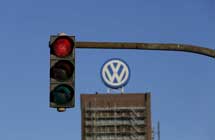人工智能遇上交通灯 交通堵塞或成历史
|
道路拥挤不堪?行人容易受伤?人工智能来帮忙。英国经济重镇米尔顿凯恩斯宣布了一项300万英镑的“智能交通灯”安装计划,有望从9月开始安装。智能交通灯可以提前监测到交通拥堵地段,放行行人和救护车,还能通知驾驶员改变路线以缓解拥堵压力。 Groundbreaking new traffic lights fitted with artificial intelligence could create safer roads and bring an end to rush hour gridlock. 'Smart' traffic lights will monitor speed and congestion, prioritise cyclists, buses and ambulances with green lights and use heatmaps to analyse how pedestrians and motorists are using the roads.
Milton Keynes is set to be the first city to trial the £3 million project from September, with 2,500 sensors monitoring all major junction points and car parking spaces. The monitors recognise different vehicles and individual road users and will be able to regulate traffic in real-time. At present, traffic lights are sequenced but not reactive to the vehicles around them and traffic monitoring is still done manually. Cameras will also allow traffic lights to prioritise cyclists, buses or ambulances with green lights. Vehicle dashboards that communicate with traffic lights could also flag the presence of cyclists to lorry drivers. The technology could also enable traffic lights to communicate with driverless cars around the corner and inform them if pedestrians are crossing the road. Vivacity Labs, which created the technology, has now secured a £1.7m project grant to roll out a city-wide sensor network. Yang Lu, Chief Technology Officer at Vivacity Labs said: 'There is very limited intelligence to the current management of urban roads. 'By introducing AI into the camera itself, Vivacity Labs has created a system that accurately identifies and reports road usage, removing the need for cumbersome manual interpretation and significantly reducing the potential for human error. This lays the groundwork for the smart city of the future, using data flows to guide driverless vehicles to their destination with minimal congestion. 'It also improves traffic today as it can be linked with existing management systems to keep vulnerable road users, such as cyclists, safe by giving priority at lights, or alter signs to direct traffic away from congestion.' |









